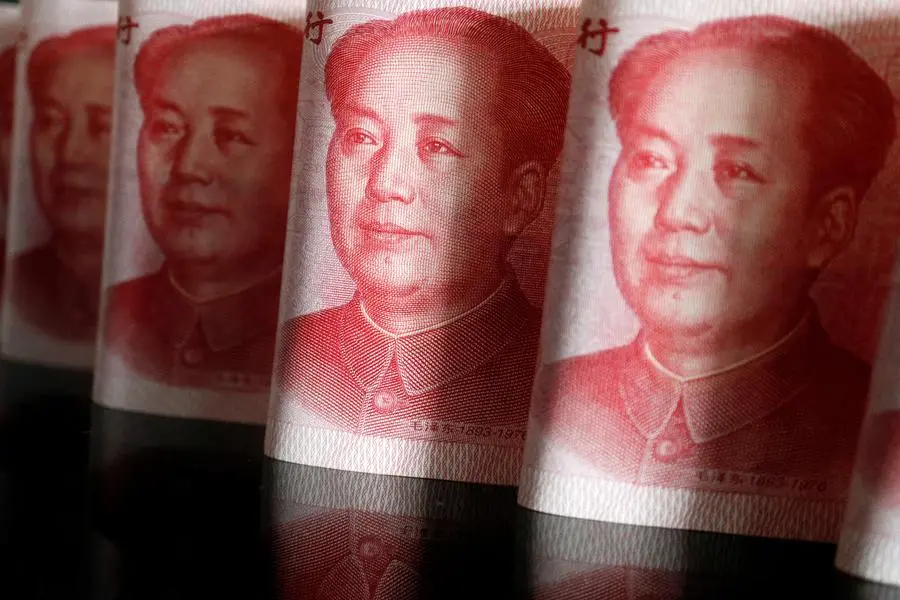PHOTO
China's central bank partially rolled over maturing medium-term policy loans and kept the interest rate unchanged for a third straight month on Tuesday, suggesting policymakers remain wary of stoking further yuan weakness by easing monetary conditions.
A global wave of interest rate increases have limited Beijing's ability to support a wobbly economy, with a falling yuan currency raising the risks of large-scale capital outflows as investors seek higher yield premiums elsewhere - particularly those offered by U.S. bonds.
Data released earlier in the day underlined mounting pressure on the world's second-biggest economy as a fresh wave of COVID outbreaks led to a further loss of momentum.
The People's Bank of China (PBOC) said it was keeping the rate on 850 billion yuan ($120.21 billion) worth of one-year medium-term lending facility (MLF) loans to some financial institutions at 2.75%, unchanged compared with the previous operation.
"Stabilising the currency market still occupies an important place in the macro policy agenda," said Wang Qing, chief macro analyst at Dongfang Jincheng.
"Keeping policy rates stable will help curb widening interest rate differentials between China and the United States and stabilise FX market expectations."
In a poll of 31 market watchers this week, all participants expected the PBOC to keep the interest rate unchanged, while 22 of them anticipated the central bank to fully roll over the maturing loans.
With 1 trillion yuan worth of MLF loans set to expire on the same day, the operation resulted in a net 150 billion yuan medium-term cash withdrawal through the instrument.
The central bank said the latest operation was aimed at counteracting higher cash demand due to tax payments and keeping "banking system liquidity reasonably ample".
The PBOC has offered 320 billion yuan of mid- to long-term liquidity through pledged supplemental lending (PSL) and relending facility since the beginning of November, it added.
"The total amount of mid- to long-term liquidity injection has exceeded the MLF maturity this month," the PBOC said in an online statement.
Separately, the central bank also injected 172 billion yuan through seven-day reverse repos while keeping borrowing costs unchanged at 2.00%, compared with 2 billion yuan worth of such loans expiring on the same day.
China's economy has been jolted by a fresh wave of COVID-19 infections across the country in recent weeks, disrupting business activity and household consumption. A raft of data on Tuesday on factory output, retail sales and property investment pointed to a further loss of momentum and a darkening outlook.
Authorities are walking a tight rope on policy. The PBOC's decision to lower key rates in August to revive credit demand and support an economy hurt by COVID shocks has accelerated the yuan's declines.
The yuan has tumbled about 10% versus the dollar so far this year and looks set for the worst annual performance since 1994, when China unified market and official rates. It was fetching 7.0508 per dollar around midday, up slightly from Monday.
Xing Zhaopeng, senior China strategist at ANZ, said any fresh monetary policy stimulus will be largely dependent on credit demand, which tumbled more than expected in October.
The central bank will "continue to maintain ample liquidity, but chances for an interest rate cut are low," he said. ($1 = 7.0710 Chinese yuan) (Reporting by Winni Zhou and Brenda Goh; Editing by Edmund Klamann & Shri Navaratnam)





















